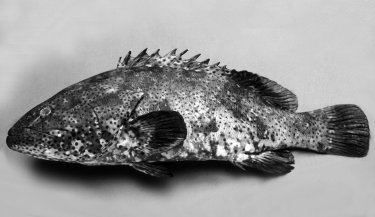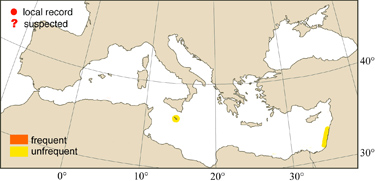
|
Relevant synonyms
Misidentification
Meristic formula
|
|
| photo : David Darom |
|
SHORT
DESCRIPTION
color : body covered with small black and white spots and blotches on greyish to olive-green background with five darker broad bars. size :
common 30-60 cm (max. 120 cm). |
DISTINGUISHING CHARACTERISTICS
BIOLOGY / ECOLOGY
habitat : very diverse: rocky, sandy and muddy substrate. Penetrates estuaries. |
|
1st
MEDITERRANEAN RECORD
|

|
|
DISTRIBUTION
|
ESTABLISHMENT SUCCESS
speculated reasons for success :
|
|
|
MODE OF
INTRODUCTION |
IMPORTANCE TO
HUMANS |
|
KEY
REFERENCES
|
|
 Epinephelus salmoides
Epinephelus salmoides